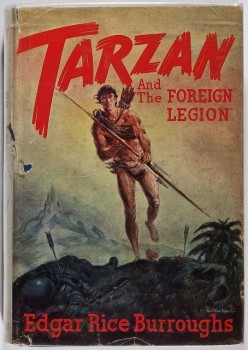Edgar Rice Burroughs’s Mars, Part 2: The Gods of Mars
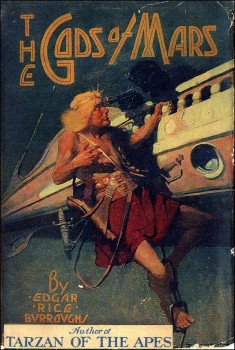 I played a bit rough with A Princess of Mars last week in my first installment of this eleven part mega-series on the Martian novels of Edgar Rice Burroughs. That book knocked me out when I first read it as a junior high school kid, but it was also the first ERB book I ever picked up. Now that I’ve read most of Burroughs’s canon, the flaws of his first book seem more obvious. For all that is wonderful about A Princess of Mars, it looks like a runt compared to the book I knew was snapping at its heels: The Gods of Mars. Also known as: “Edgar Rice Burroughs gets the knack.”
I played a bit rough with A Princess of Mars last week in my first installment of this eleven part mega-series on the Martian novels of Edgar Rice Burroughs. That book knocked me out when I first read it as a junior high school kid, but it was also the first ERB book I ever picked up. Now that I’ve read most of Burroughs’s canon, the flaws of his first book seem more obvious. For all that is wonderful about A Princess of Mars, it looks like a runt compared to the book I knew was snapping at its heels: The Gods of Mars. Also known as: “Edgar Rice Burroughs gets the knack.”
Our Saga: The adventures of Earthman John Carter, his progeny, and sundry other visitors and natives, on the planet Mars. A dry and slowly dying world, the planet known to its inhabitants as “Barsoom” contains four different human civilizations, one non-human one, a scattering of science among swashbuckling, and a plethora of religions, mystery cities, and strange beasts. The series spans 1912 to 1964 with eleven books: nine novels, a book of linked novellas, and a volume collecting two unrelated novellas.
Today’s Installment: The Gods of Mars (1913)
Previous Installment: A Princess of Mars (1912)
The Backstory
In his original proposal to editor Thomas Newell Metcalf at Munsey’s Magazines regarding a novel of Martian adventure, Edgar Rice Burroughs suggested he could write three books from the concept. But he apparently wasn’t certain about the content of the second and third volumes to follow A Princess of Mars, since it was Metcalf who gave him the idea of where to start the next book. After Metcalf rejected Burroughs’s second novel, The Outlaw of Torn, he urged the author to return to Mars and send John Carter into the Valley of Dor, the mysterious paradise mentioned a number of times in the first book. Burroughs ran with the concept, and finished the novel in the beginning of October 1912.
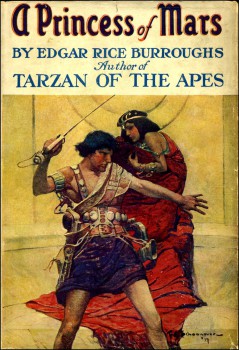 The year 2012 C.E. is the centenary of the Reader Revolution. Two novels published in pulp magazines that year, A Princess of Mars and Tarzan of the Apes, re-shaped popular fiction, helped change the United States into a nation of readers, and created the professional fiction writer. One man wrote both books: Edgar Rice Burroughs.
The year 2012 C.E. is the centenary of the Reader Revolution. Two novels published in pulp magazines that year, A Princess of Mars and Tarzan of the Apes, re-shaped popular fiction, helped change the United States into a nation of readers, and created the professional fiction writer. One man wrote both books: Edgar Rice Burroughs.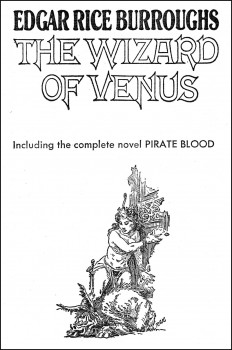 The Venus series ends not with a novel, but a novella. Consequently, this will be the shortest entry in my survey of Burroughs’s last series, but I have appended a wrap-up with my final thoughts on the Venus books as a whole.
The Venus series ends not with a novel, but a novella. Consequently, this will be the shortest entry in my survey of Burroughs’s last series, but I have appended a wrap-up with my final thoughts on the Venus books as a whole.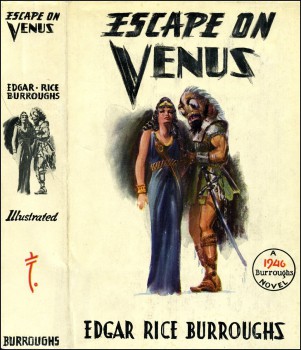 I love Edgar Rice Burroughs. His novels have had an enormous influence on me as a writer and as a pulp fan. But, I must admit, sometimes he wrote … this kind of thing….
I love Edgar Rice Burroughs. His novels have had an enormous influence on me as a writer and as a pulp fan. But, I must admit, sometimes he wrote … this kind of thing….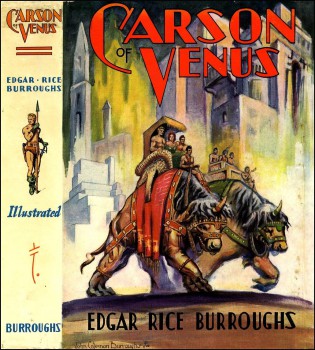 Five years have passed since Edgar Rice Burroughs wrote Lost on Venus, and the world has undergone a startling and disturbing metamorphosis. Something sinister and confusing is taking place in Europe, and across the Atlantic waters the people of the United States are growing concerned at the saber-rattling of Nazi Germany. The poverty-crippled period in which ERB wrote the previous Venus books has given way to a time of escalating fear of a second great war.
Five years have passed since Edgar Rice Burroughs wrote Lost on Venus, and the world has undergone a startling and disturbing metamorphosis. Something sinister and confusing is taking place in Europe, and across the Atlantic waters the people of the United States are growing concerned at the saber-rattling of Nazi Germany. The poverty-crippled period in which ERB wrote the previous Venus books has given way to a time of escalating fear of a second great war.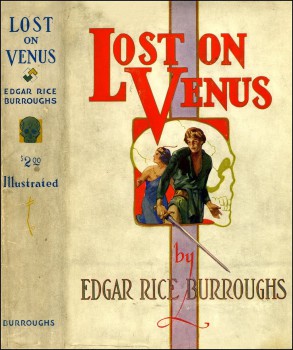 The parade on the second planet continues in Lost on Venus. This is one of the most controversial works that Edgar Rice Burroughs ever published, although it surprises me that enough readers managed to get through the lackluster first book, Pirates of Venus, to want to pick up the sequel and be able to argue about it. But here it is, so get out your anti-tharban gear and be ready to test your genetic purity!
The parade on the second planet continues in Lost on Venus. This is one of the most controversial works that Edgar Rice Burroughs ever published, although it surprises me that enough readers managed to get through the lackluster first book, Pirates of Venus, to want to pick up the sequel and be able to argue about it. But here it is, so get out your anti-tharban gear and be ready to test your genetic purity!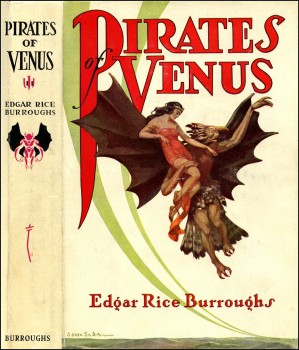 Next year brings the hundredth anniversary of Edgar Rice Burroughs’s first two published novels:
Next year brings the hundredth anniversary of Edgar Rice Burroughs’s first two published novels:  The People That Time Forgot (1977)
The People That Time Forgot (1977)